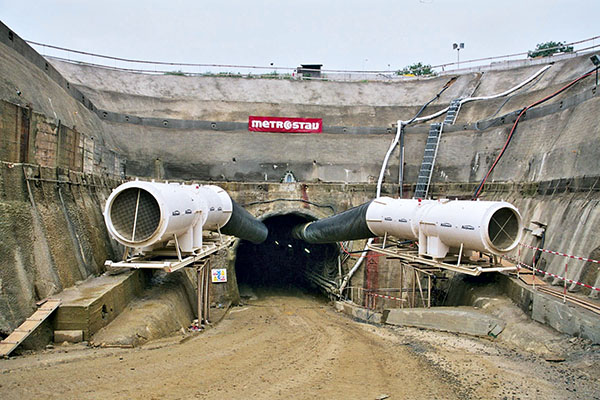

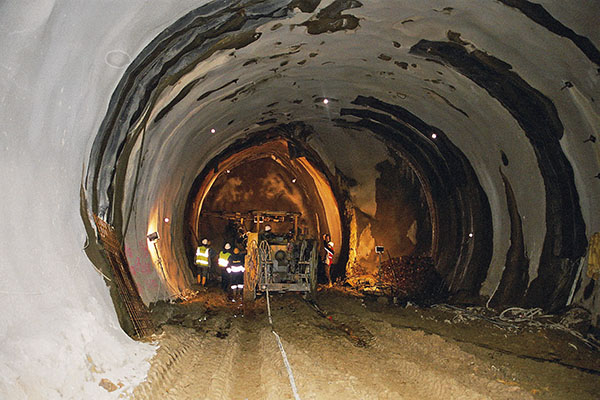
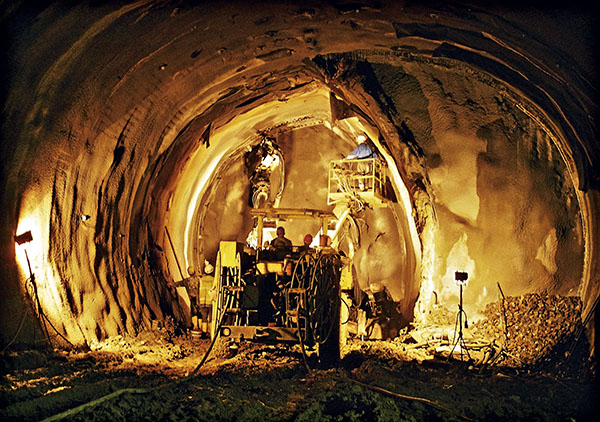
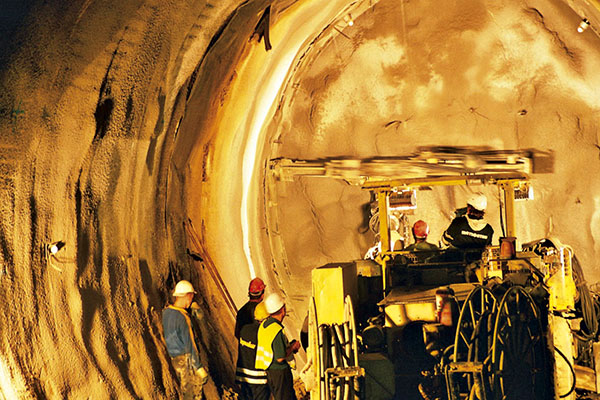
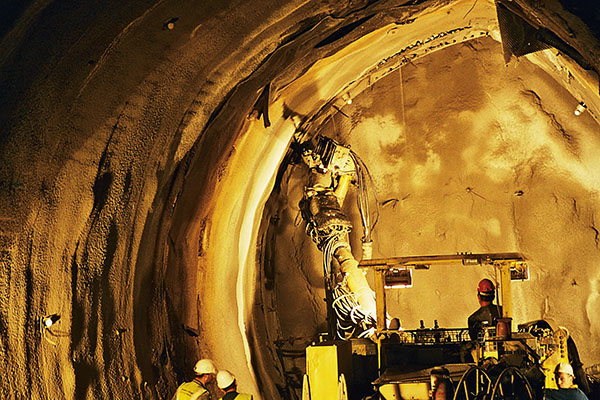
Extension of the underground line from Ládvi to Letnany in Prague
Extension of the Prague metro line C, Prague, Czech Republic
Prague, a city of 1.2 million inhabitants, has a relatively young metro system that moves more than 1 million passengers per day. The system corresponds to the model common in Eastern Europe: three main lines crossing at three central stations, thereby forming a triangle in the city center. The Prague underground network consists of 51 stations connected by more than 50 km of track that mostly runs underground. The depth of the stations and the route of lines vary significantly. The deepest station, Námestí Míru, is about 52 m below the surface.
The first 18.1 km long section of the Prague metro, line C, was opened in 1974. Subsequently, line C was extended to Háje in the south in 1980. Another extension across the river Vltava to Holesovice was completed in 1984. Line C is the underground line closest to the surface and connects the north with Prague’s south-east via 15 stations.
On May 24, 2004, the foundation was laid in Prosek for another extension of line C: construction stage IV.C2. This extension of the metro has been designed to provide a fast connection of the northern suburban town of Prosek with its 90,000 inhabitants and the Letnany industrial zone with the old town in Prague. The line runs relatively close to the surface, so that the metro stations can be built using the open-cut and cover method. The New Austrian Tunneling Method (NATM) is being used to drive the 5.5 km long tunnel between the individual stations. One particularly noteworthy aspect of this project is that construction is taking place in an area of former mining activities.
The plans for the construction of the new Prosek metro station had already been changed several times at the preliminary stage. Due to the complex geological conditions, the new tunnel that connects the Prosek and Letnany stations places high demands on the quality of the planning, the construction work and the systems and products used. As regards the construction of the Prosek station, the bottom of the excavated site is located below the water table, and infiltrating ground water must be elaborately drained by artesic wells during construction. The risk of possible settlements in the residential area of Prosek in connection with additional tunneling work to be carried out must be reduced to a minimum. The successful realization of the building project will be a master piece of Czech tunneling engineers.
SM7 A.S. is proud to contribute to the successful completion of this challenging project through its own technical know-how and the use of high-quality DSI products. SM7 A.S. also supplied high-quality DSI geotechnical products such as glass fiber anchors and DSI Bar Anchors for additional single structures as well as technical equipment.
For additional stabilization of the elaborate tunnel construction projects, a total of 6,000 m DSI Hollow Bar Anchors were delivered to the construction site just in time by SM7 A.S.. After completion of the IV.C2 section, relocation of the provisional bus station and the park & rail site from Ládvi to Letnany is planned. The opening of the three additional stations (Strizkov, Prosek and Letnany) is scheduled for 2008.
